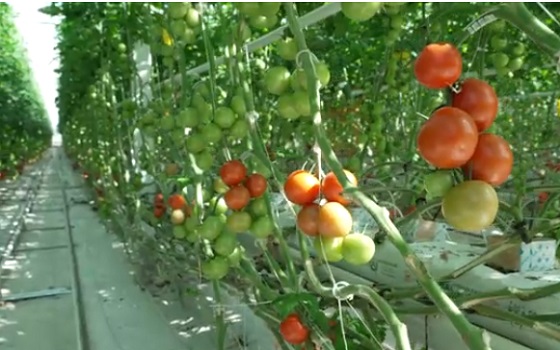Business
Ottawa aims to reduce size of salmon fishing industry by buying licences

VANCOUVER — The federal government is offering to buy Pacific salmon commercial fishing licences from those looking to get out of the declining industry as it tries to protect the fish that remain.
Fisheries and Oceans Canada has earmarked $123 million for the voluntary retirement program and two future initiatives that will dispose of derelict vessels and allow Indigenous communal commercial licence holders to switch to another species.
About 1,300 commercial licence holders with a full- or reduced-fee salmon troll, gillnet or seine licence are eligible for the voluntary retirement program.
The government plans to buy licences using a “reverse auction” where licensees set the price they want, and the government decides what it’s willing to pay based on annual reports that lay out market value.
The expectation is there will be multiple rounds of auctions until 2026.
Neil Davis, regional director of fisheries management, said there is no way to know how many licence holders will take the government up on its offer, but the goal is to end up with a “substantial reduction” in fleet size.
“The purpose of this program is really to support that transition to a smaller commercial harvesting sector that is better aligned with the scope of harvest opportunity in the fishery for the foreseeable future,” he said.
Fisheries and Oceans has said many salmon stocks are declining to “historic lows” due to the effects of climate change, habitat loss and other threats.
Those who decide to retire their licence could also qualify for vessel and gear disposal costs.
Davis said the government will be working with harbour authorities on the details of the program so that they can efficiently collect vessels and gear and ensure they have a place to go for safe disposal.
Applications for a new Indigenous communal commercial licence program are expected to go out this winter.
About 700 licences issued to First Nations on behalf of their community qualify for the program. It would allow the nations to voluntarily exchange those licences for funding and access to a different fish.
Duncan Stephen, director of Indigenous programs, said the government is willing to help with costs associated with the transition.
“There is support contemplated in the program for incremental costs associated with things like gear modifications or upgrades, vessel modifications, training or other capacity that might be needed to make that transition to non-salmon species,” he said.
The funding for all three programs is part of a nearly $650-million Pacific Salmon Strategy Initiative announced last year.
Davis said the new programs are just one piece of work that needs to be done to protect salmon.
“We also need to address the other things that have the potential to impact them and whether that’s the quality of their habitat, or what we do to use hatcheries to support some of our conservation goals, or what we do to build resilience in populations such that they’re able to adapt to things that are changing in their broader natural environment,” he said.
“So, this is only one piece of what will be a much broader effort to address what we think is the key threats to salmon are, which we have some ability to affect.”
This report by The Canadian Press was first published Dec. 14, 2022.
Ashley Joannou, The Canadian Press
Local Business
Red Deer Downtown Business Association to Wind Down Operations

The Downtown Business Association (DBA) Board of Directors has made the decision to wind down the Association’s operations at the end of 2025.
The Board determined that the Association is no longer able to operate sustainably under the financial framework available for 2026. After exploring all reasonable alternatives, the Board concluded that it could not continue without reducing services to a level that would no longer provide meaningful value to levy-paying businesses.
The DBA does not receive any operating funding from City Hall in a regular year, all funds raised are through Business Improvement Area Levy that consists of a mandatory levy placed on all businesses operating within the Business Improvement Area. These funds are legislated under the Municipal
Government Act, to be used to promote the Business Improvement Area, which is achieved through marketing and event initiatives along with providing advocacy support primarily to local government on behalf of the business community.
In recent years, the DBA has been a committed advocate for re-examining the approach to Downtown Governance. The Board has consistently maintained that the responsibility for funding downtown initiatives in such a socially charged environment should not rest solely with the business community.
Despite their efforts, the DBA recognized that the funds generated through the Business Improvement Area Levy were insufficient to effectively address the growing challenges of the current operating environment. This ongoing financial strain highlighted the need for a more equitable and sustainable
model to re-establish the downtown as a safe and welcoming heart of the city.
At the annual DBA budget presentation to City Hall, the DBA requested the essential funding needed to implement the Greater Downtown Governance Committee’s recommendations — work that the DBA is uniquely positioned to lead and has been delivering despite depleting resources for many years. The request was not approved. Instead, The City offered a one-time $100,000 Grant-in-Lieu, paired with a proposed 60% increase to the Business Improvement Area levy in 2026.
After careful analysis, the Board concluded that increasing the levy would place undue strain on already challenged businesses and compromise the DBA’s role as a trusted advocate. Operating with the reduced funding of $225,000 would require further staff reductions in an already under resourced environment and a significant reduction in programs, making it impossible to deliver the level of support that downtown businesses deserve and vitally need.
Beginning January 1, 2026, the City of Red Deer will become the primary contact point for matters previously supported by the DBA, including downtown support programs, business-district coordination, events, safety and cleanliness support, and stakeholder engagement. The DBA will work with City staff to support a smooth transition.
The DBA will continue to provide Clean Team services through the delivery of the City-funded environmental contract until February 1st, 2026.
Quote from CEO, Amanda Gould:
“To our business community, we have always operated with your best interests in our heart, continually driving the vision of a thriving downtown environment that serves every member of our community. The changes ahead will have a significant impact on downtown, as there will no longer be an organization dedicated to ensuring the downtown remains top-of-mind, leading events, marketing initiatives, or advocating on your behalf. It is likely you will experience less coordinated support and collective representation.
After 13 years of service to you and our beautiful downtown, it is with great personal sadness that we find ourselves here, but our message remains clear – addressing the unique challenges of our downtown should not rest solely on your shoulders. We cannot, in good faith, collect a levy that does not enable us to provide the essential services needed for our evolving downtown landscape”.
Quote from DBA Board Chair, Brandon Bouchard:
“The incredible staff at the Downtown Business Association have consistently delivered on their mandate with outstanding dedication and effectiveness. Through their efforts, they have successfully promoted the downtown area, organized impactful marketing and event initiatives, and provided steadfast
advocacy support for the business community. Their work has extended well beyond the legislated requirements, as they have proactively responded to the evolving needs of downtown businesses, adapting to challenges and supporting operations within a complex and changing environment.
Despite the staff’s relentless commitment to positioning the DBA as an effective leader for downtown interests, the absence of a sustainable funding model has made it impossible to continue delivering meaningful support. The Board cannot, in good conscience, propose a levy that does not enable the
Association to meet the required level of service, address the shifting priorities of the business community, or respond to the continually evolving needs of the downtown”.
Agriculture
Growing Alberta’s fresh food future

A new program funded by the Sustainable Canadian Agricultural Partnership will accelerate expansion in Alberta greenhouses and vertical farms.
Albertans want to keep their hard-earned money in the province and support producers by choosing locally grown, high-quality produce. The new three-year, $10-milllion Growing Greenhouses program aims to stimulate industry growth and provide fresh fruit and vegetables to Albertans throughout the year.
“Everything our ministry does is about ensuring Albertans have secure access to safe, high-quality food. We are continually working to build resilience and sustainability into our food production systems, increase opportunities for producers and processors, create jobs and feed Albertans. This new program will fund technologies that increase food production and improve energy efficiency.”
“Through this investment, we’re supporting Alberta’s growers and ensuring Canadians have access to fresh, locally-grown fruits and vegetables on grocery shelves year-round. This program strengthens local communities, drives innovation, and creates new opportunities for agricultural entrepreneurs, reinforcing Canada’s food system and economy.”
The Growing Greenhouses program supports the controlled environment agriculture sector with new construction or expansion improvements to existing greenhouses and vertical farms that produce food at a commercial scale. It also aligns with Alberta’s Buy Local initiative launched this year as consumers will be able to purchase more local produce all year-round.
The program was created in alignment with the needs identified by the greenhouse sector, with a goal to reduce seasonal import reliance entering fall, which increases fruit and vegetable prices.
“This program is a game-changer for Alberta’s greenhouse sector. By investing in expansion and innovation, we can grow more fresh produce year-round, reduce reliance on imports, and strengthen food security for Albertans. Our growers are ready to meet the demand with sustainable, locally grown vegetables and fruits, and this support ensures we can do so while creating new jobs and opportunities in communities across the province. We are very grateful to the Governments of Canada and Alberta for this investment in our sector and for working collaboratively with us.”
Sustainable Canadian Agricultural Partnership (Sustainable CAP)
Sustainable CAP is a five-year, $3.5-billion investment by federal, provincial and territorial governments to strengthen competitiveness, innovation and resiliency in Canada’s agriculture, agri-food and agri-based products sector. This includes $1 billion in federal programs and activities and $2.5 billion that is cost-shared 60 per cent federally and 40 per cent provincially/territorially for programs that are designed and delivered by provinces and territories.
Quick facts
- Alberta’s greenhouse sector ranks fourth in Canada:
- 195 greenhouses produce $145 million in produce and 60 per cent of them operate year-round.
- Greenhouse food production is growing by 6.2 per cent annually.
- Alberta imports $349 million in fresh produce annually.
- The program supports sector growth by investing in renewable and efficient energy systems, advanced lighting systems, energy-saving construction, and automation and robotics systems.
Related information
-

 Great Reset2 days ago
Great Reset2 days agoSurgery Denied. Death Approved.
-

 Business2 days ago
Business2 days agoCanada invests $34 million in Chinese drones now considered to be ‘high security risks’
-

 Business2 days ago
Business2 days agoThe Climate-Risk Industrial Complex and the Manufactured Insurance Crisis
-

 Health2 days ago
Health2 days agoThe Data That Doesn’t Exist
-

 Business1 day ago
Business1 day agoCanada Can Finally Profit From LNG If Ottawa Stops Dragging Its Feet
-

 Economy2 days ago
Economy2 days agoAffordable housing out of reach everywhere in Canada
-

 Crime1 day ago
Crime1 day agoInside the Fortified Sinaloa-Linked Compound Canada Still Can’t Seize After 12 Years of Legal War
-

 National1 day ago
National1 day agoLiberal bill “targets Christians” by removing religious exemption in hate-speech law






